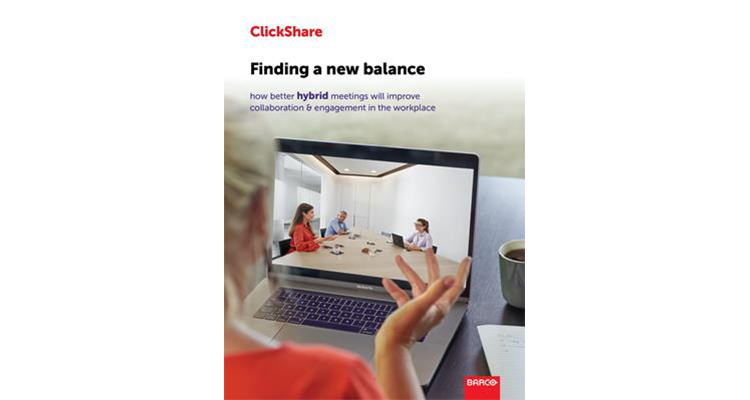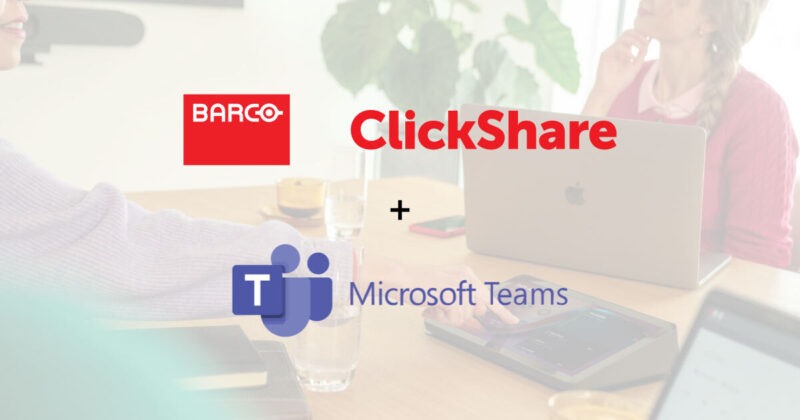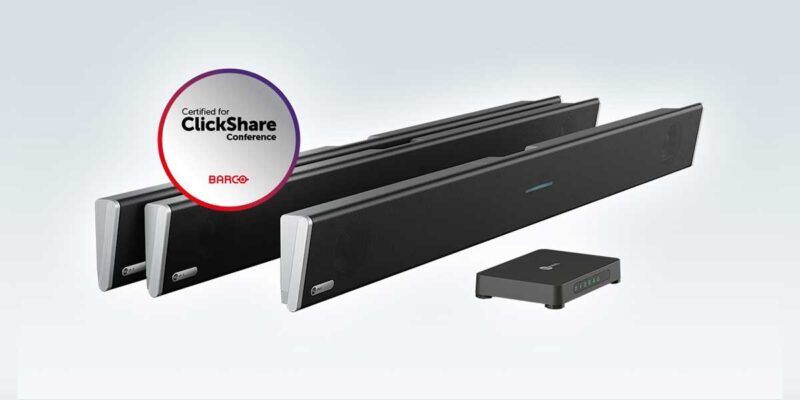Barco ClickShare Reveals Global Study Results — Workers Want to Get Back to the Office and Back to Technology
THIS IS A GUEST BLOG FROM BARCO

New global study by Barco ClickShare reveals that employees worldwide are desperate to get back to the office and are looking for their employers to invest in a technology-driven hybrid working environment post-COVID-19.
- On average, employees want to spend a maximum of 2 days a week at home in future.
- 49% enjoy working from home less than they did at the start of the pandemic.
- Workers predict a rise in hybrid meetings (meetings featuring both in-person and remote attendees) in the next 12 months.
- Videoconferencing technology is the number one investment priority for employees worldwide, demanded by one in three workers surveyed.
- 56% of employees prefer to host video calls from their laptop over any other device or in-room technology.
A major survey of white-collar workers around the world, published today by Barco, global leader in visualization and collaboration solutions, has revealed surprising findings about employee expectations for the workplace in the aftermath of the COVID-19 pandemic.
The study – which surveyed 1,750 employees around the world (250 each from the United States, United Kingdom, France, Germany, Australia, India and United Arab Emirates) through global research panel provider Dynata – found that only 15% of employees want to continue to work from home full-time after COVID-19 restrictions are lifted. Working from home clearly lost its sparkle, since nearly half of those surveyed said they enjoy working from home less now than they did at the start of the pandemic, citing challenges in collaborating with colleagues, struggling to contribute to meetings and missing the social side of office life as the main reasons for wanting to return to the office.
- 42% globally say working from home stifles their creativity.
- 37% miss office social life and find it harder to collaborate when working remotely.
- 45% find it easier to work with colleagues in the office.
Hybrid working as the next norm
Instead, employees want a hybrid workplace model, where most of their time is spent in the office but they have the flexibility and freedom to work from home when it works best for them or suits the type of work they need to do. Most employees think that we are already returning to something resembling normality after COVID-19, with the number of remote-only meetings expected to drop significantly and hybrid meetings set to become the norm. The survey found the ideal balance on average globally to be three days in the office, with a maximum of two days a week working remotely.
Videoconferencing is the heartbeat of business collaboration
There was a significant demand from workers for their employers to invest in a redesign of the office, including better facilities, and particularly technologies, to enable this hybrid working balance and a laptop-first approach. The most desired investment by employees was for better video conferencing technologies, which one in three of the employees globally named as an investment priority. The use of video and own devices (BYOM) has become prevalent and plays a fundamental role today in collaboration, communication and productivity for a digitally driven workforce.
- 56% want apps for joining a video call in one click within the year, if they aren’t already available.
- Six in 10 people believe that a lack of in-person interaction is a key reason for feeling less connected to their colleagues
- 49% say that collaborating remotely with colleagues and clients does not come naturally.
If technology can help to tackle this and enable hybrid meetings that foster better connections between physical and virtual participants, we will see meeting quality and employee engagement continue to rise.
Technology is expected to drive continued meeting improvements
When you look at what employees want to see from future meetings, it’s clear that there are high expectations for technology-driven improvements. The biggest priorities are technologies that improve efficiency and usability, and which streamline workflows.





